Lemon Pound Cake
This post may contain affiliate links. Read my full disclosure policy.
This lemon pound cake is the ultimate dessert for lemon lovers.
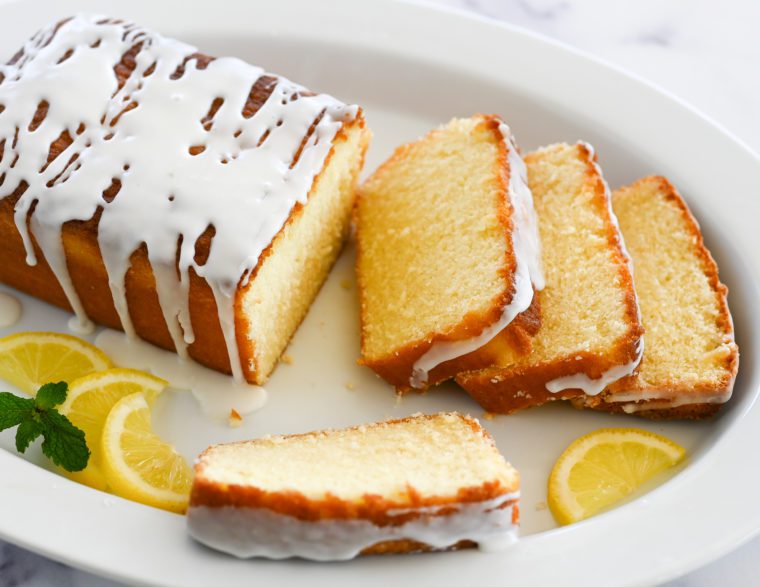
Calling all lemon lovers! This lemon pound cake is a dessert made just for you. The recipe incorporates both lemon zest and lemon juice into the cake batter, infusing the cake with a lovely lemon flavor. But the real magic happens after baking — the cake is generously doused with lemon syrup and then drizzled with a tart lemon glaze, delivering an intense burst of lemon flavor with every bite. The recipe yields two ultra-moist loaves that stay fresh for days on the countertop or can be frozen for later. If you’d like to switch things up, try my popular lemon poppyseed cake and lemon blueberry pound cake variations. A big thank you and shoutout to Karen Tannenbaum, one of my longtime readers, for inspiring this wonderful recipe!
What You’ll Need To Make Lemon Pound Cake
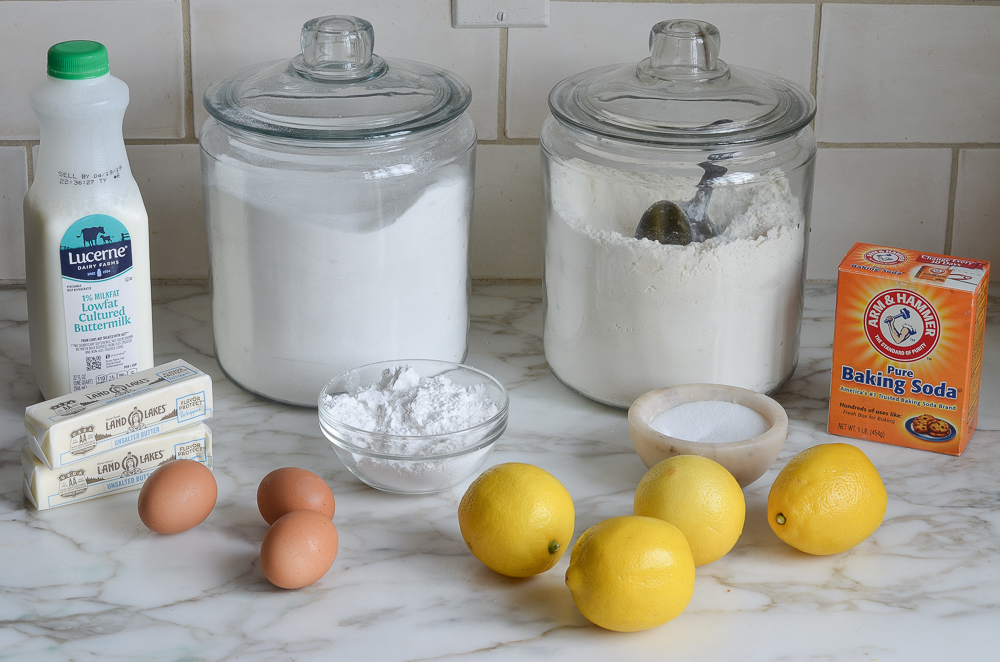
STEP-BY-STEP INSTRUCTIONS
Start by zesting and juicing your lemons. And be sure you zest the lemons first, otherwise, it will be impossible once they are juiced. The best tool for zesting is a rasp grater but any fine grater will do.
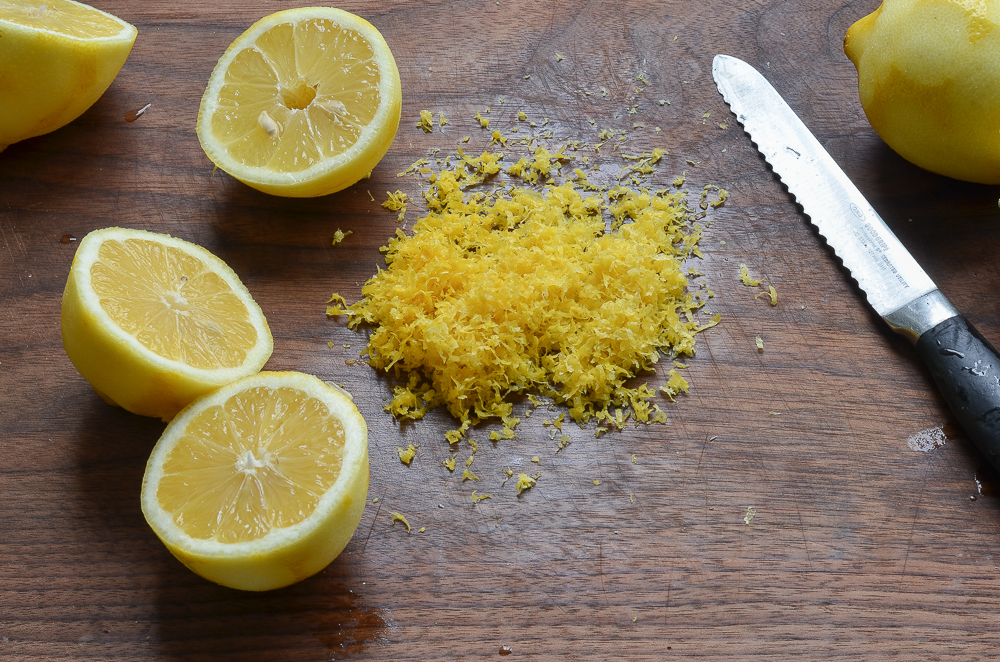 Combine the flour, salt, and baking soda in a mixing bowl. I always add dry ingredients in little piles so I don’t forget what I’ve already added.
Combine the flour, salt, and baking soda in a mixing bowl. I always add dry ingredients in little piles so I don’t forget what I’ve already added.
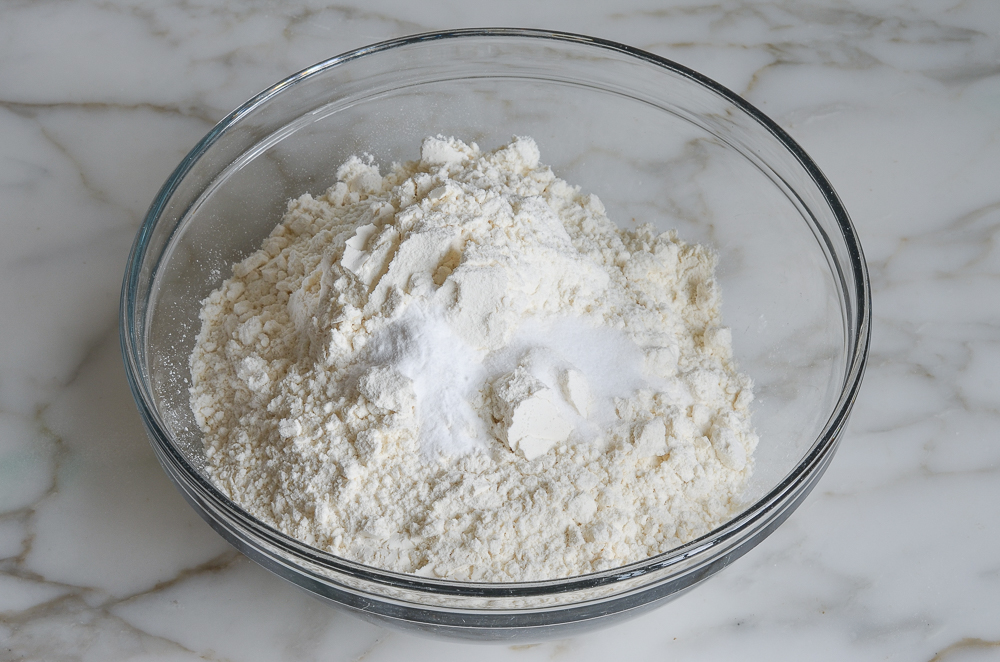 Whisk and set aside.
Whisk and set aside.
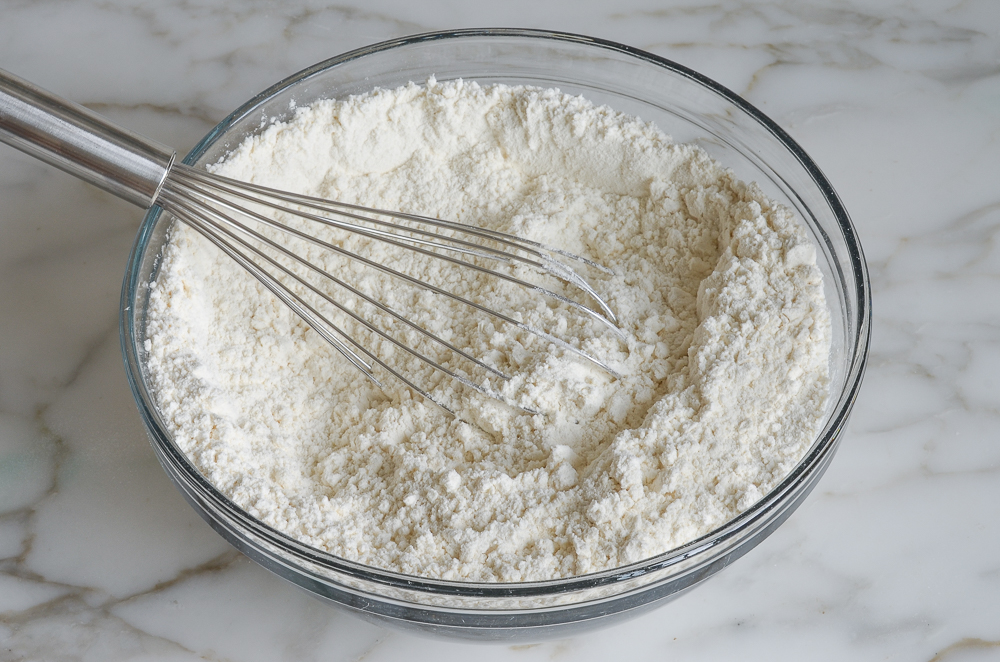
In another bowl, whisk together the buttermilk, lemon zest, and lemon juice. Set aside.
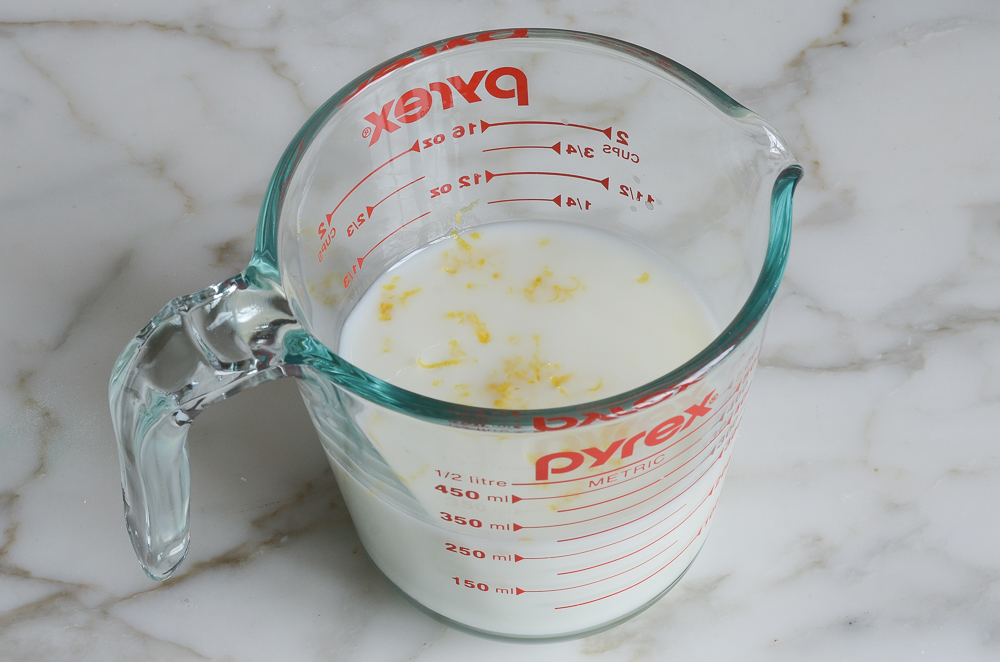
In the bowl of an electric mixer fitted with the paddle attachment (or beaters), cream the butter and sugar on medium speed until light and fluffy, 3 to 4 minutes.
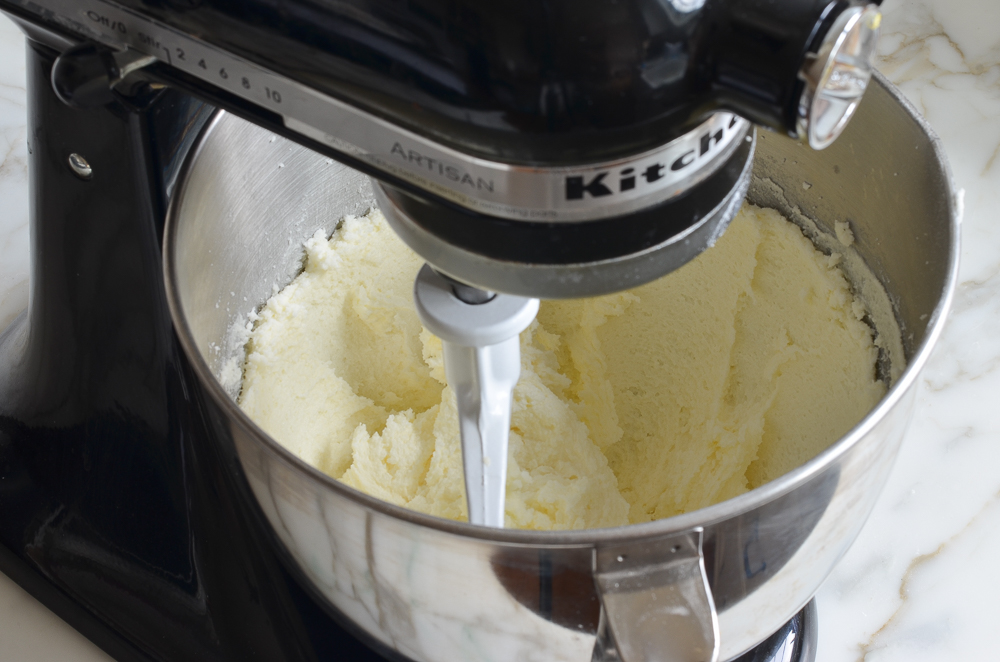
Scrape down the sides of the bowl, then beat in the eggs one at a time, beating well after each addition. Scrape down the sides of the bowl again.
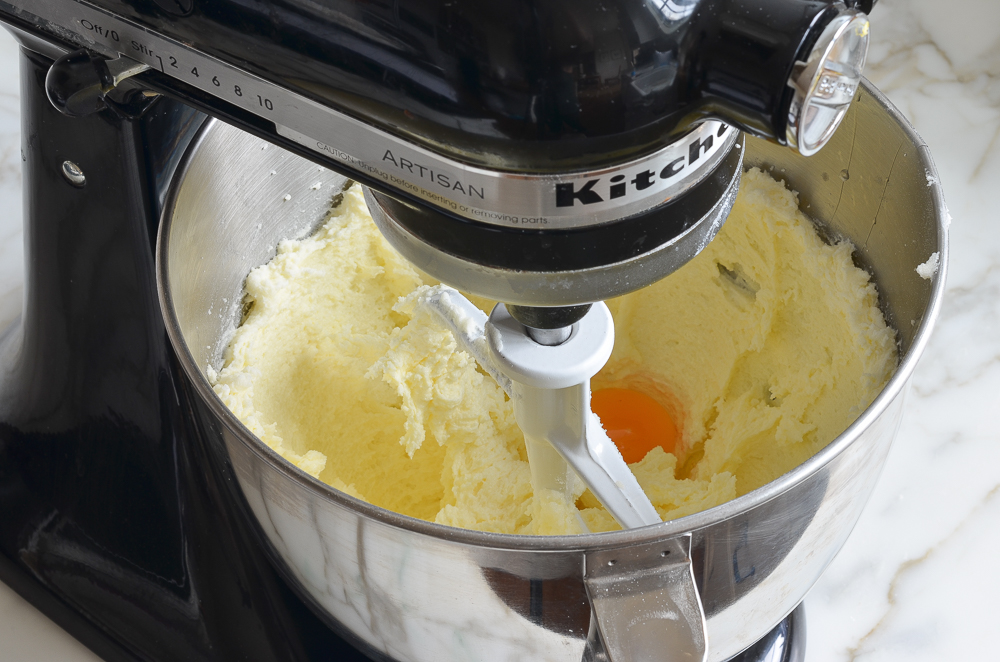
With the mixer on low speed, beat in one-quarter of the flour mixture, then one-third of the buttermilk mixture. Beat in another quarter of the flour, then another third of the buttermilk mixture. Repeat with another quarter of the flour and the remaining buttermilk mixture. Finally, beat in the remaining flour mixture.
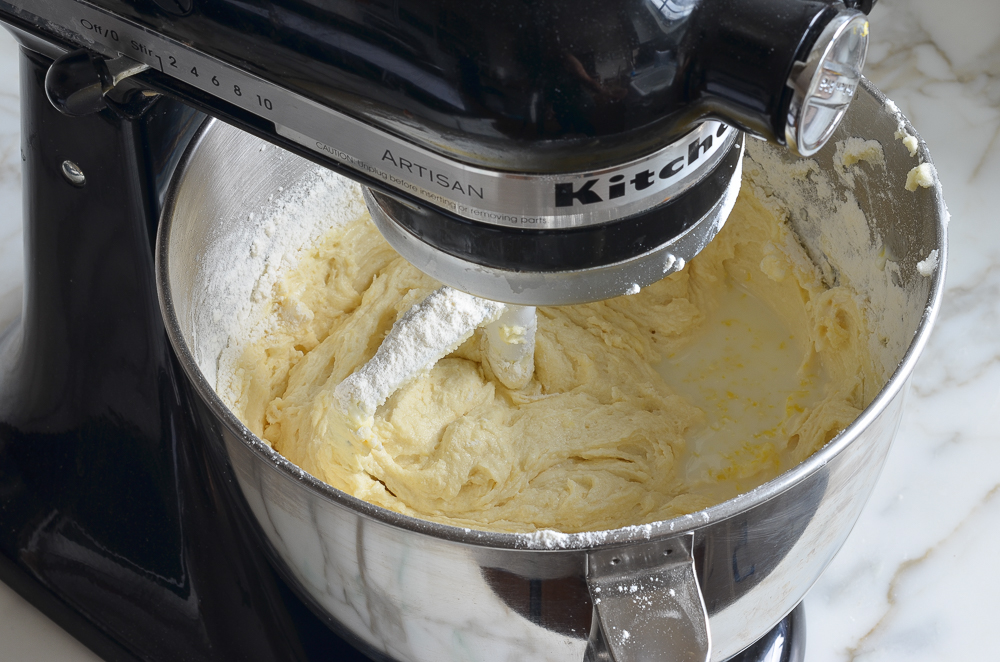
Scrape down the sides of the bowl, and give a quick mix to make sure all of the ingredients are well-incorporated.
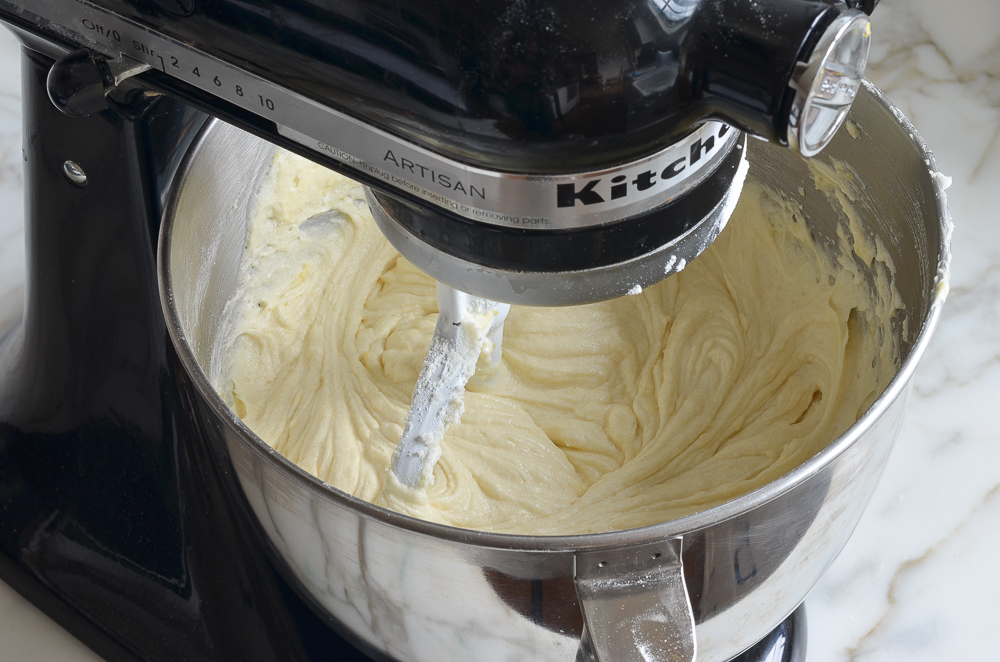
Transfer the cake batter to the prepared pans and smooth with a rubber spatula.
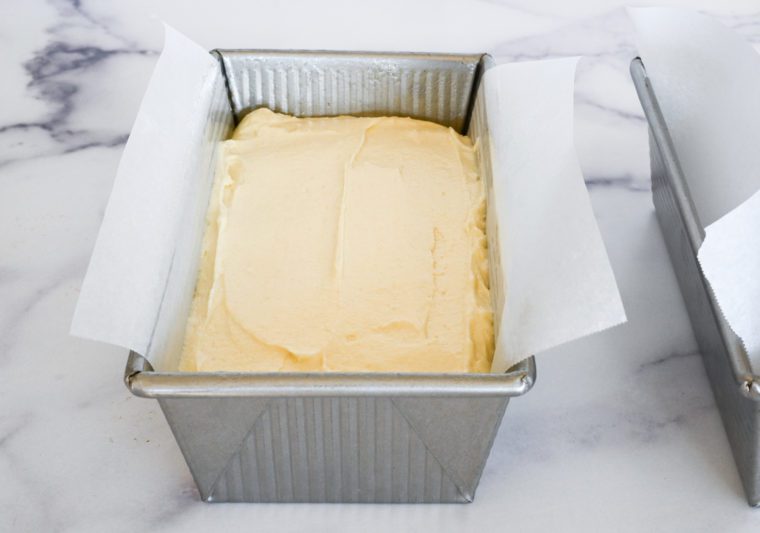
Bake for 55 to 65 minutes, or until the top is golden and a tester comes out clean.
Set the cakes on a cooling rack, and cool in the pans for 10 minutes.
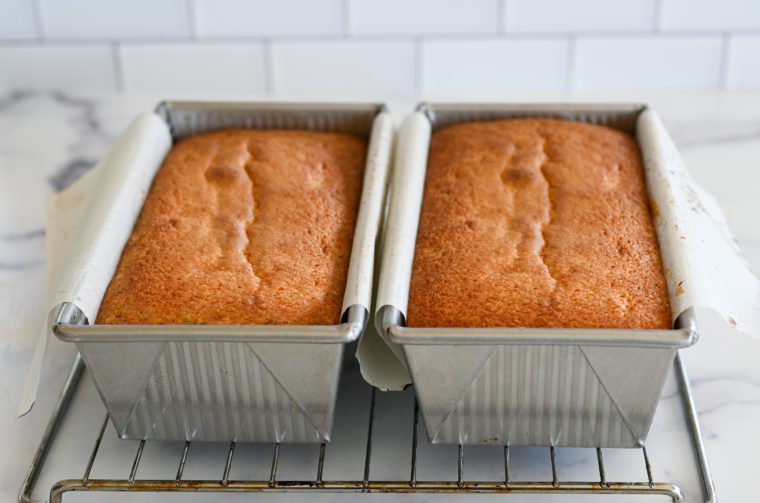
Carefully run a knife along the unlined sides of the pans to loosen the cake from the pan. Using the parchment slings, lift the cakes out of the pans and place onto the rack, leaving the parchment paper in place under the cakes. Let cool for about 1 hour.
When the cakes are almost cool, make the syrup. Combine the water and sugar in a saucepan and bring to a boil. Remove from the heat and stir in the lemon juice.
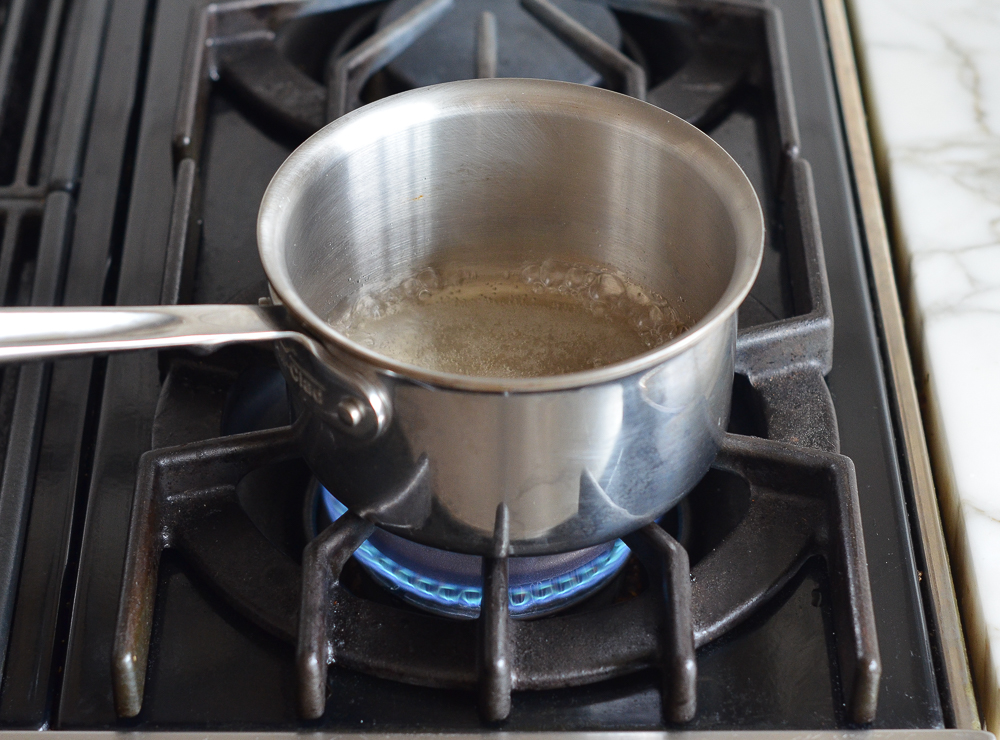
To make the glaze: in a medium bowl, whisk together the confectioners’ sugar and lemon juice. Add more confectioners’ sugar or lemon juice as necessary to make a thick but pourable glaze (it should be a little thicker than you’d think, about the consistency of molasses or honey).
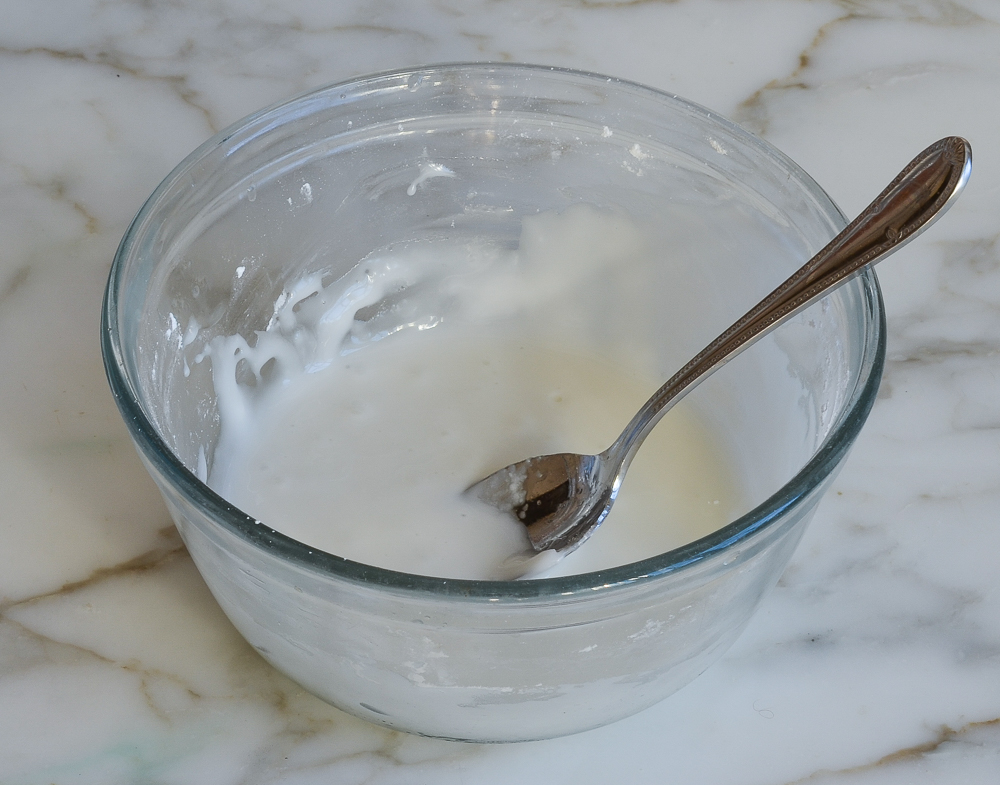
When the cakes are cool, carefully transfer them to serving platters. Gradually brush the warm syrup all over the cakes, including the sides, letting it soak in as you go.
Finally, spoon the glaze over the top of the cake, letting it drip down the sides.
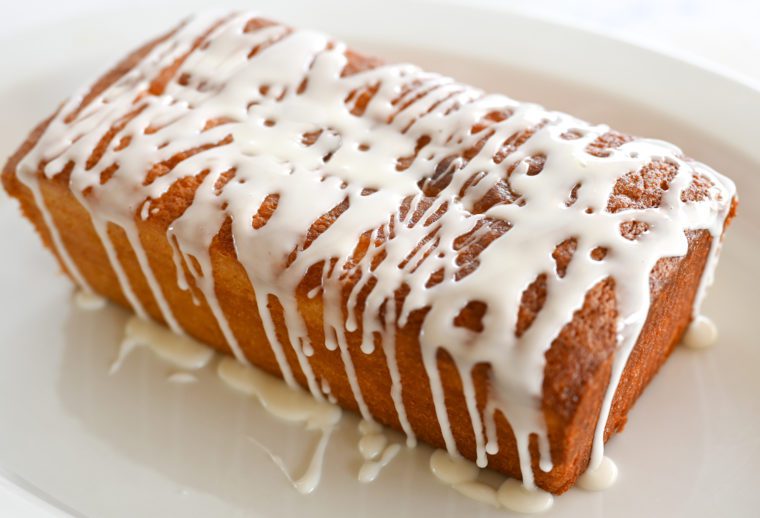
Let the cakes sit for about one hour to allow the glaze to set before serving.
How To Freeze Lemon Pound Cake
The cakes can be frozen without the glaze for up to 3 months. After they are completely cooled, double-wrap them securely with aluminum foil or plastic freezer wrap, or place them in a heavy-duty freezer bag. Thaw overnight on the countertop before serving. (Add the syrup before the cake is frozen and add the glaze after the cake is thawed.)
Note: This recipe was updated in 2022; to see the original version, click here.

You May Also Like
- Warm Lemon Pudding Cakes
- Lemon Poppy Seed Muffins
- Lemon Bars
- Cake Pans to Cookie Sheets: 16 Essential Baking Pans
Lemon Pound Cake
This lemon pound cake is the ultimate dessert for lemon lovers.
Ingredients
For the Cake
- 3 cups all-purpose flour, spooned into measuring cup and leveled-off with a knife
- ½ teaspoon baking soda
- ½ teaspoon salt
- 1 cup buttermilk (low-fat is fine) (see note)
- 2 tablespoons (packed) grated lemon zest (see note)
- 2 tablespoons fresh lemon juice
- 2 sticks (1 cup) unsalted butter, softened
- 2¼ cups granulated sugar
- 3 large eggs
For the Syrup
- 2 tablespoons water
- 2 tablespoons granulated sugar
- 2 teaspoons fresh lemon juice
For the Glaze
- 1 cup confectioners' sugar
- 2 tablespoons fresh lemon juice
Instructions
- Preheat the oven to 350°F and set an oven rack in the middle position. Spray two 8½ x 4½-inch loaf pans with nonstick cooking spray. Line the long sides of the pans with parchment paper “slings” and spray lightly with nonstick cooking spray again.
- In a medium bowl, whisk together the flour, baking soda and salt. Set aside.
- In another bowl, whisk together the buttermilk, lemon zest and lemon juice. Set aside.
- In the bowl of an electric mixer fitted with the paddle attachment (or beaters), cream the butter and sugar on medium speed until light and fluffy, 3 to 4 minutes. Scrape down the sides of the bowl, then beat in the eggs one at a time, beating well after each addition. Scrape down the sides of the bowl again.
- With the mixer on low speed, beat in one-quarter of the flour mixture, then one-third of the buttermilk mixture. Beat in another quarter of the flour, then another third of the buttermilk mixture. Repeat with another quarter of the flour and the remaining buttermilk mixture. Finally, beat in the remaining flour mixture. Scrape down the sides of the bowl, and give a quick mix to make sure all of the ingredients are well-incorporated.
- Divide the thick batter into the prepared pans and smooth with a rubber spatula. Bake for 55 to 65 minutes, or until the top is golden and a tester comes out clean.
- Set the cakes on a cooling rack, and cool in the pans for 10 minutes. Carefully run a knife along the unlined sides of the pans to loosen the cake from the pan. Using the parchment slings, lift the cakes out of the pans and place onto the rack, leaving the parchment paper in place under the cakes. Let cool for about 1 hour.
- When the cakes are almost cool, make the syrup. Combine the water and sugar in a saucepan and bring to a boil. Remove from the heat and stir in the lemon juice.
- When the cakes are cool, carefully transfer them to serving platters.
- Gradually brush the warm syrup all over the cakes, including the sides, letting it soak in as you go.
- To make the glaze: in a medium bowl, whisk together the confectioners' sugar and lemon juice. Add more confectioners' sugar or lemon juice as necessary to make a thick but pourable glaze (it should be a little thicker than you'd think, about the consistency of molasses or honey). Spoon the glaze over the top of the cake, letting it drip down the sides. Let the cakes sit for about one hour to allow the glaze to set before serving.
- Note: If you’d like to make your own buttermilk, check out the easy method here.
- Note: You'll need 4 to 5 large lemons for the entire recipe.
- Make-Ahead/Freezer-Friendly Instructions: The cakes can be made up to 1 day ahead of time and stored in a cake dome or airtight container at room temperature. They can also be frozen (without the final glaze) for up to 3 months. After they are completely cooled, double-wrap securely with aluminum foil or plastic freezer wrap, or place them in a heavy-duty freezer bag. Thaw overnight on the countertop before serving. (Add the syrup before the cake is frozen and add the glaze after the cake is thawed.)
Nutrition Information
Powered by ![]()
- Per serving (16 servings)
- Serving size: 1 slice
- Calories: 313
- Fat: 7g
- Saturated fat: 4g
- Carbohydrates: 59g
- Sugar: 40g
- Fiber: 1g
- Protein: 4g
- Sodium: 143mg
- Cholesterol: 51mg
This website is written and produced for informational purposes only. I am not a certified nutritionist and the nutritional data on this site has not been evaluated or approved by a nutritionist or the Food and Drug Administration. Nutritional information is offered as a courtesy and should not be construed as a guarantee. The data is calculated through an online nutritional calculator, Edamam.com. Although I do my best to provide accurate nutritional information, these figures should be considered estimates only. Varying factors such as product types or brands purchased, natural fluctuations in fresh produce, and the way ingredients are processed change the effective nutritional information in any given recipe. Furthermore, different online calculators provide different results depending on their own nutrition fact sources and algorithms. To obtain the most accurate nutritional information in a given recipe, you should calculate the nutritional information with the actual ingredients used in your recipe, using your preferred nutrition calculator.

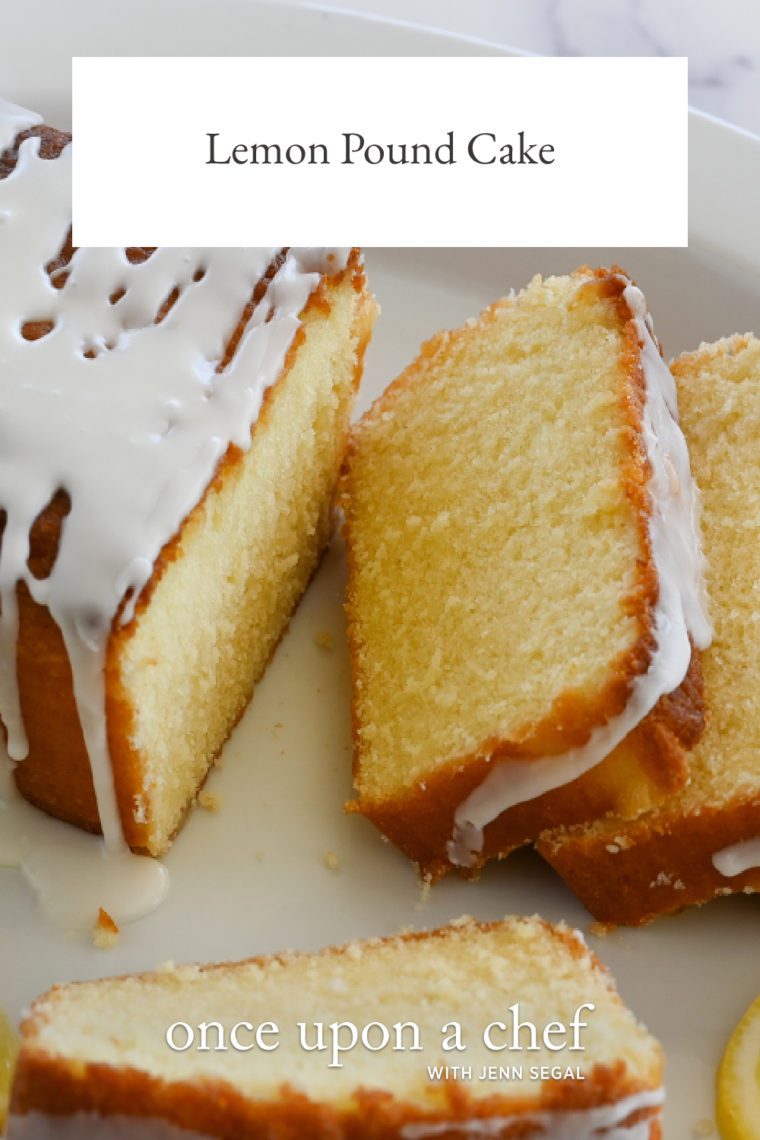
Hi Jenn,
When I make this glaze the sugar clumps. What am I doing wrong? I mix all the ingredients at once then stir with a fork. Am I missing something?
Hi Eric, Are you using confectioners’ sugar?
Hi
If I use this recipe for two 9 inch rounds, and use your frosting, do you think I can safely cover the cake in fondant? I want to use this for a birthday cake and I have a fondant design in mind.
Yes, Deb, I think it would work. Enjoy!
Lovely recipe! Batter is nice and light but heavy and rich on lemon flavor. First time I made it and I will make it again for sure. I think getting the glaze consistency just perfect is the key, especially to the presentation. Practice makes perfect!Make it! Go for it!! Thanks for awesome recipe.
I’ve made this cake several times now and it has been a hit every time. It has been one of THEE MOST REQUESTED CAKES. Thanks so much!!!
killer pound cake! I made this for Christmas day and it was delicious. I will make this again and again. You put together an amazing recipe!! Thank You.
Do you think I could make this two days ahead and ice it the day off and still have it taste as fresh? The cake didn’t last long enough to see if it was still fresh a couple days later:).
Hi Tara, Glad you enjoyed it. And, yes, two days ahead will be fine – it keeps well.
This cake definitely deserves a 5 star rating! I’ve tried many pound cakes over the years, but the texture of this cake reminded me of the cakes my grandmother used to make when I was a little girl. Hence, this recipe is a keeper. Thank you for the recipe. 🙂
Awesome recipe! I made this cake for Christmas, it was my first Lemon pound cake. The directions were great, I followed every step and the cake came out perfect. I received great compliments, my husband stated it tasted like the one his grandmother use to make
I made this recipe today and it was amazing. Was shocked since this was my first attempt at making a pound cake from scratch. Question, if I omit the lemon juice and zest, and add in vanilla extract, will it work? Does the lemon do anything for the cake besides the flavor?
Hi Thais, So glad it turned out well for you! In baking, baking soda is used to leaven cakes with acidic ingredients such as lemon juice, brown sugar, buttermilk, etc. Since this cake also has buttermilk, I think you’d be okay leaving out the lemon juice. But since I haven’t tried it (and cakes can be finicky), I can’t say for sure if it will rise quite as much.
Hello Jennifer, I have made this lemon pound cake 5 times in the span of a week. We all love it! The flavour is wonderful even though I have not been able to incorporate all the syrup into the cake. I have made it into a bundt form twice, and made it into loaf pans the other times. I have run into the same problem every single time – the cake cracks on top. I get a huge crater, all around it. I wish I could upload a picture and show you (maybe I could email it to you?!) – can you help me trouble shoot? I bake it at 325 F and I follow your instructions to the letter. Help would be appreciated. Thank you for another wonderful recipe!
Glad you’re enjoying it, Deniza! Please do send me a photo (jennifer@onceuponachef.com) and I can help troubleshoot.
The same thing happened to me, a big crater around the center. I wonder what I did wrong? I do live altitude so maybe I should have added a little extra flour?
Hi Rhonda, sorry to hear you had a problem with this! It could be that the cake was a bit undercooked. Also, I know that high altitude baking has its challenges but I’m not experienced with it, so I can’t say if it had an impact in this situation – I’m sorry! Here are some tips on high altitude baking that may shed some light.
I love making Bundt cakes. The shape is fun with the ridges and dripping glaze. So easy to slice evenly into perfect portions when sharing.
This lemon pound cake recipe is a winner. I don’t have a mixer with paddles but I managed with a wooden spoon and patience to make a light, beautiful cake just like the photo. What’s even more fantastic is I substituted gluten free flour.
I plan to share this cake with my favorite coworkers over Christmas week.
Then I’ll make another one for New Year’s week. Thank you for this recipe. The instructions and photos are so helpful.